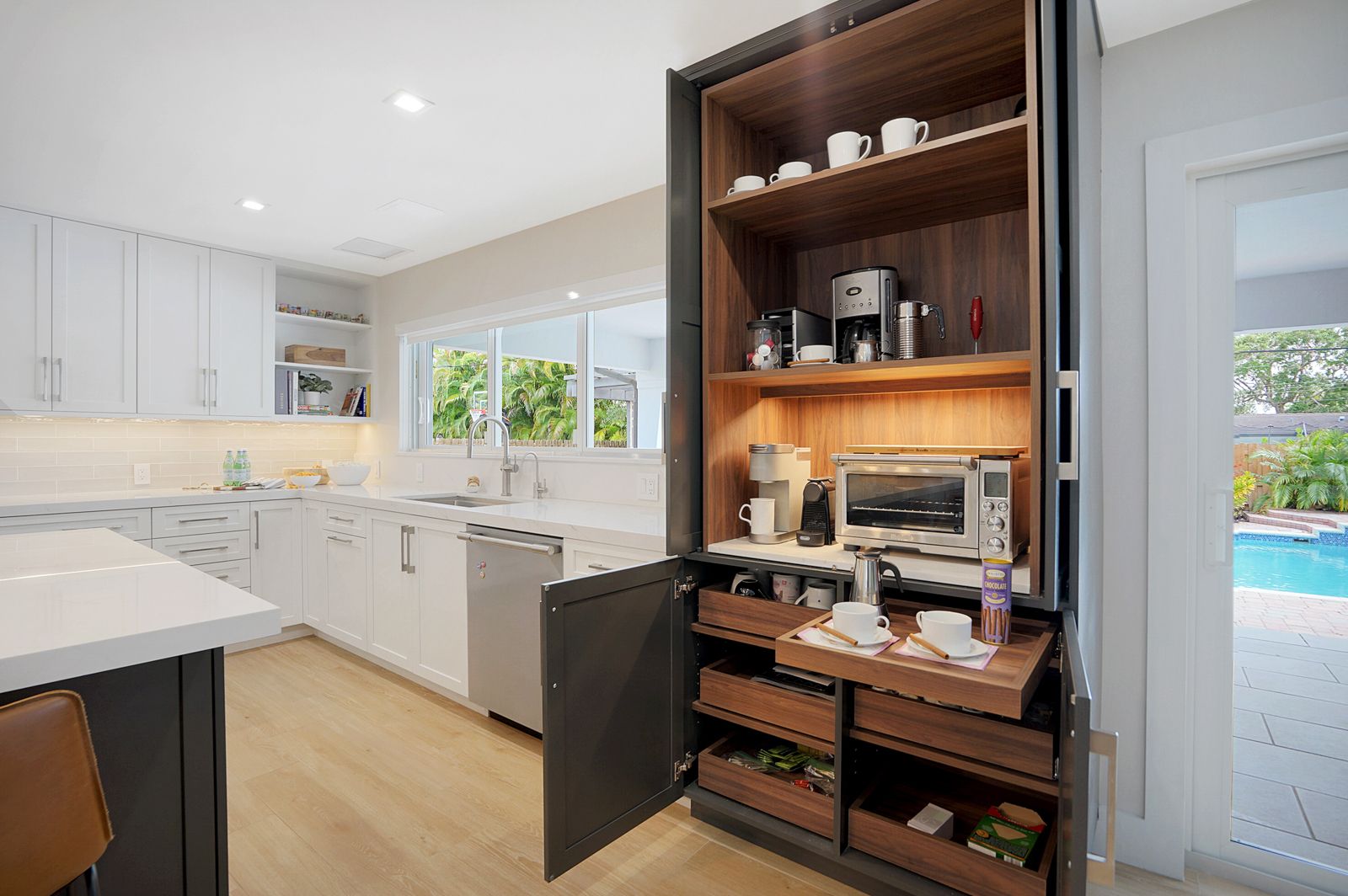All Categories
Featured
In home layout, door positioning commonly takes a backseat to larger architectural decisions, yet it plays a pivotal role in shaping exactly how a home really feels and functions. Proper door positioning guarantees that spaces are efficient, visually pleasing, and for a comfortable lifestyle. Right here's an in-depth check out the science behind door placement and why it should have even more interest in the style process.
Doors are the gateways that link one area to another, and their placement must help with smooth motion throughout the home.
Key Factors To Consider:
Logical Pathways: Position doors to straighten with natural web traffic patterns. As an example, a cooking area door must give straight accessibility to the eating area to streamline day-to-day regimens.
Minimizing Barriers: Prevent putting doors where furnishings or architectural components might block their swing or produce traffic jams.
Transitions: Usage doorways to note transitions in between personal and public locations, such as hallways causing bedrooms.
The positioning of doors can substantially influence exactly how light and air distribute within a home, adding to its total setting and power effectiveness.
Positioning Strategies:
Cross-Ventilation: Location doors other openings or opposite windows to promote air flow, especially in cozy environments.
Sunshine Optimization: Consider the alignment of exterior doors to record early morning or mid-day light, lightening up insides normally.
Glass Doors: Utilize doors with glass inserts to enable light to filter via, improving brightness in adjacent rooms.
Tactical door positioning is vital for preserving privacy in vital locations without endangering accessibility.
Ideal Practices:
Bedrooms and Bathrooms: Placement these doors far from high-traffic areas like living kitchens or rooms to produce a feeling of retreat.
Guest Areas: For homes with guest suites, doors must offer both very easy access and privacy for visitors.
Main Entryway: The front door must offer straight access to typical areas without disclosing as well much of the home's interior.
Beyond performance, doors play a considerable duty in the aesthetic coherence of a space. Their placement and layout must boost the home's visual allure.
Style Tips:
Proportion and Equilibrium: Line up doors symmetrically in shared areas like hallways to produce a feeling of order.
Centerpieces: Usage grand access doors or distinct designs as aesthetic highlights.
Consistency: Suit door styles and surfaces across the home for a natural appearance.
Door positioning can affect a home's energy efficiency by regulating warmth flow and insulation.
![]()
Energy-Saving Methods:
Shielded Doors: Use well-insulated exterior doors to minimize energy loss.
Wind Defense: Placement main doors away from dominating wind instructions or use vestibules to reduce drafts.
Zoning: Use doors to section off areas of the home for targeted home heating or air conditioning.
![]()
In several cultures, the placement of doors brings symbolic significance and can impact just how a home is regarded.
Examples:
Feng Shui: In this custom, the front door's positioning influences the flow of "chi" or energy, with standards emphasizing visibility and equilibrium.
![]()
Directional Positioning: In Vastu Shastra, an ancient Indian design approach, door alignment is believed to effect success and harmony.
Entry Statements: Grand entryways or elaborately designed doors can indicate heat and hospitality.
Last Thoughts
Door placement is both an art and a scientific research. Thoughtful positioning guarantees that homes are not just useful yet also unified and inviting. By considering spatial flow, natural light, personal privacy, and cultural aspects, developers and house owners can create rooms that really feel instinctive and well balanced. When planned properly, doors become extra than just entrance factors; they shape the entire living experience.
- Enhancing Spatial Flow
Doors are the gateways that link one area to another, and their placement must help with smooth motion throughout the home.
Key Factors To Consider:
Logical Pathways: Position doors to straighten with natural web traffic patterns. As an example, a cooking area door must give straight accessibility to the eating area to streamline day-to-day regimens.
Minimizing Barriers: Prevent putting doors where furnishings or architectural components might block their swing or produce traffic jams.
Transitions: Usage doorways to note transitions in between personal and public locations, such as hallways causing bedrooms.
- Maximizing Natural Light and Air Flow
The positioning of doors can substantially influence exactly how light and air distribute within a home, adding to its total setting and power effectiveness.
Positioning Strategies:
Cross-Ventilation: Location doors other openings or opposite windows to promote air flow, especially in cozy environments.
Sunshine Optimization: Consider the alignment of exterior doors to record early morning or mid-day light, lightening up insides normally.
Glass Doors: Utilize doors with glass inserts to enable light to filter via, improving brightness in adjacent rooms.
- Stabilizing Personal Privacy and Accessibility
Tactical door positioning is vital for preserving privacy in vital locations without endangering accessibility.
Ideal Practices:
Bedrooms and Bathrooms: Placement these doors far from high-traffic areas like living kitchens or rooms to produce a feeling of retreat.
Guest Areas: For homes with guest suites, doors must offer both very easy access and privacy for visitors.
Main Entryway: The front door must offer straight access to typical areas without disclosing as well much of the home's interior.
- Visual Integration
Beyond performance, doors play a considerable duty in the aesthetic coherence of a space. Their placement and layout must boost the home's visual allure.
Style Tips:
Proportion and Equilibrium: Line up doors symmetrically in shared areas like hallways to produce a feeling of order.
Centerpieces: Usage grand access doors or distinct designs as aesthetic highlights.
Consistency: Suit door styles and surfaces across the home for a natural appearance.
- Power Efficiency Considerations
Door positioning can affect a home's energy efficiency by regulating warmth flow and insulation.

Energy-Saving Methods:
Shielded Doors: Use well-insulated exterior doors to minimize energy loss.
Wind Defense: Placement main doors away from dominating wind instructions or use vestibules to reduce drafts.
Zoning: Use doors to section off areas of the home for targeted home heating or air conditioning.

- Symbolic and social Impacts
In several cultures, the placement of doors brings symbolic significance and can impact just how a home is regarded.
Examples:
Feng Shui: In this custom, the front door's positioning influences the flow of "chi" or energy, with standards emphasizing visibility and equilibrium.

Directional Positioning: In Vastu Shastra, an ancient Indian design approach, door alignment is believed to effect success and harmony.
Entry Statements: Grand entryways or elaborately designed doors can indicate heat and hospitality.
Last Thoughts
Door placement is both an art and a scientific research. Thoughtful positioning guarantees that homes are not just useful yet also unified and inviting. By considering spatial flow, natural light, personal privacy, and cultural aspects, developers and house owners can create rooms that really feel instinctive and well balanced. When planned properly, doors become extra than just entrance factors; they shape the entire living experience.
Latest Posts
Choosing the Perfect Glasses for Your Demands
Published Jan 18, 25
0 min read
Enhancing Property Value with Continuous Panel Fencing
Published Jan 18, 25
1 min read
Custom Ornamental Iron Gates: What You Need to Know
Published Jan 18, 25
2 min read